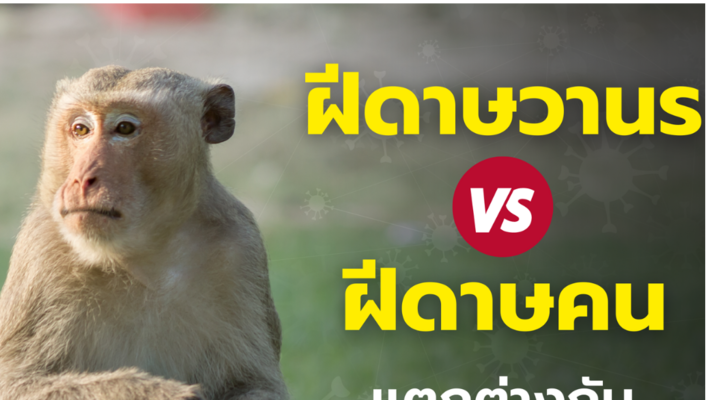What is the difference between monkeypox and smallpox?
Health News
01 Jun 2022
views
What is the difference between monkeypox and smallpox?
We've probably heard of smallpox since childhood, but it's a rare disease. Because the WHO declared smallpox extinct since 1974, Thai people stopped vaccination to prevent smallpox since then but the news of the "monkeypox" epidemic in Europe and North America has made people around the world realize how serious the danger is? How much are people at risk of contracting this disease? What is the difference between monkeypox and smallpox? Monkeypox is a disease caused by a orthopoxvirus. It is a contagious disease between animals and people. The disease is most common in Central Africa and West Africa. The monkeypox is a virus that is closely related to the virus that causes smallpox. It is found in many animals, especially primates and rodents such as rats, squirrels, rabbits, wildlife and pets. People can also be infected with this infection. Patients will show symptoms of
Monkeypox about 7-21 days after infection, and most will recover on their own. The symptoms are often severe in children. By the symptom is:
- Fever, chills.
- Headache, sore throat, enlarged lymph nodes. (enlarged lymph nodes is an important symptom that different from smallpox in humans.)
- Muscular pain, back pain.
- Tired.
- After about 1-3 days, there will be a rash on the limbs and may occur on the face and body as well.
- From the rash, it becomes pustules.
- In the last stage, the pustules will be covered with scabs and come off.
Once infected, it takes approximately 7-17 days to incubate, after which symptoms will begin to show as follows:
- High fever.
- Chills.
- Headache.
- Severe weakness.
- Severe back pain.
- Vomiting.
- Red rash spreads all over the body and turns into blisters and pustules respectively.


